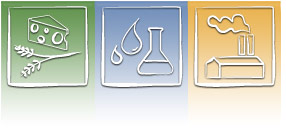|
Factors
that can affect hygrometer precision
The
hygrometers’ precision essentially depends on how
insusceptible they are to the following three factors:
Linearity error
It's
caused by the typical non-linearity of RH sensors. Hanna
hygrometers compensate for the effects of this error.
It is advisable however to calibrate the meter periodically
to reduce the probability of this error reoccurring.
Temperature error
It's caused by the variation of the hygroscopic properties
of the sensor's dielectric material as a function of
temperature. In fact, the ratio between the quantity
of water vapor present in the dielectric and the relative
humidity is not directly proportional, but varies with
temperature. Due to this temperature error, hygrometers
normally do not operate at temperatures below -20 ºC
(-4ºF).
Calibration error
It's caused by an incorrect calibration procedure. There
are many "do-it-yourself" calibration kits
on the market. Most are made of a receptacle containing
two sealed chambers and two different types of salt.
It is possible to simulate a particular RH value by
filling each chamber with the correct distilled water
and salt solution. The RH probe is first immersed in
the low RH chamber and allowed to stabilize. The meter
is then calibrated at the RH value of the chamber being
used. The procedure is repeated with the high RH chamber.
Since RH is dramatically affected by temperature changes
kits do not provide accurate calibration due to the
practical difficulties in performing the calibration
at a constant temperature.
Climatic
chambers that simulate different humidity levels are
the ideal solution to calibrate hygrometers accurately.
Hygrometers are also calibrated using two different
levels of relative humidity in this calibration procedure,
and then the accuracy is checked by simulating other
RH values in the chamber. Hanna Service Centers are
equipped with state-of-the-art calibration chambers
to provide the best accuracy.

Dew
Point
The
dew point is defined as the lower temperature to which
air must be cooled in order for condensation (saturation)
to occur. The dew point is dependent on the concentration
of water vapor present, and therefore the relative humidity.
The graphs here can help to easily determine the dew
point after measuring the relative humidity and temperature
of the air.
To
determine the dew point temperature, start by drawing
a horizontal line at the measured temperature level
until it intersects the measured relative humidity line.
From the intersection point, draw a vertical line down
to the dew point axis, and read the dew point temperature.

Hygrometer
calibration
The
calibration is performed at the factory using state-of-the-art
humidity chambers and adjusted at 3 different points
(14%, 50%, 80%) against a NIST standard.
Relative
Humidity calibration is a very delicate process that
requires special equipment and trained personnel.
Hanna now offers service contracts for all relative
humidity meters. This supplies the user with the confidence
that the meter is operating at 100% of its performance.
Ask your dealer or the nearest Hanna office for more
details.
|

